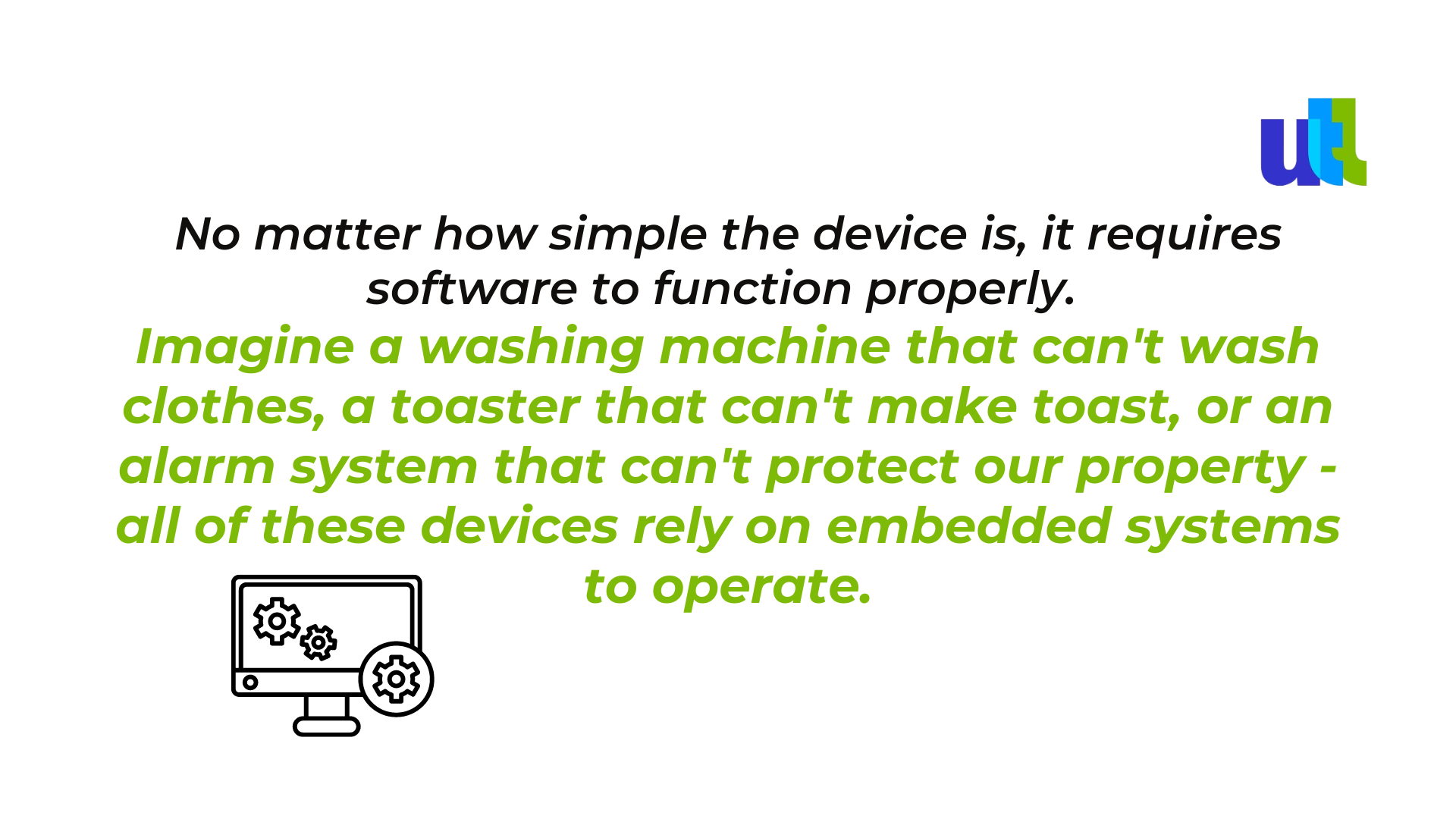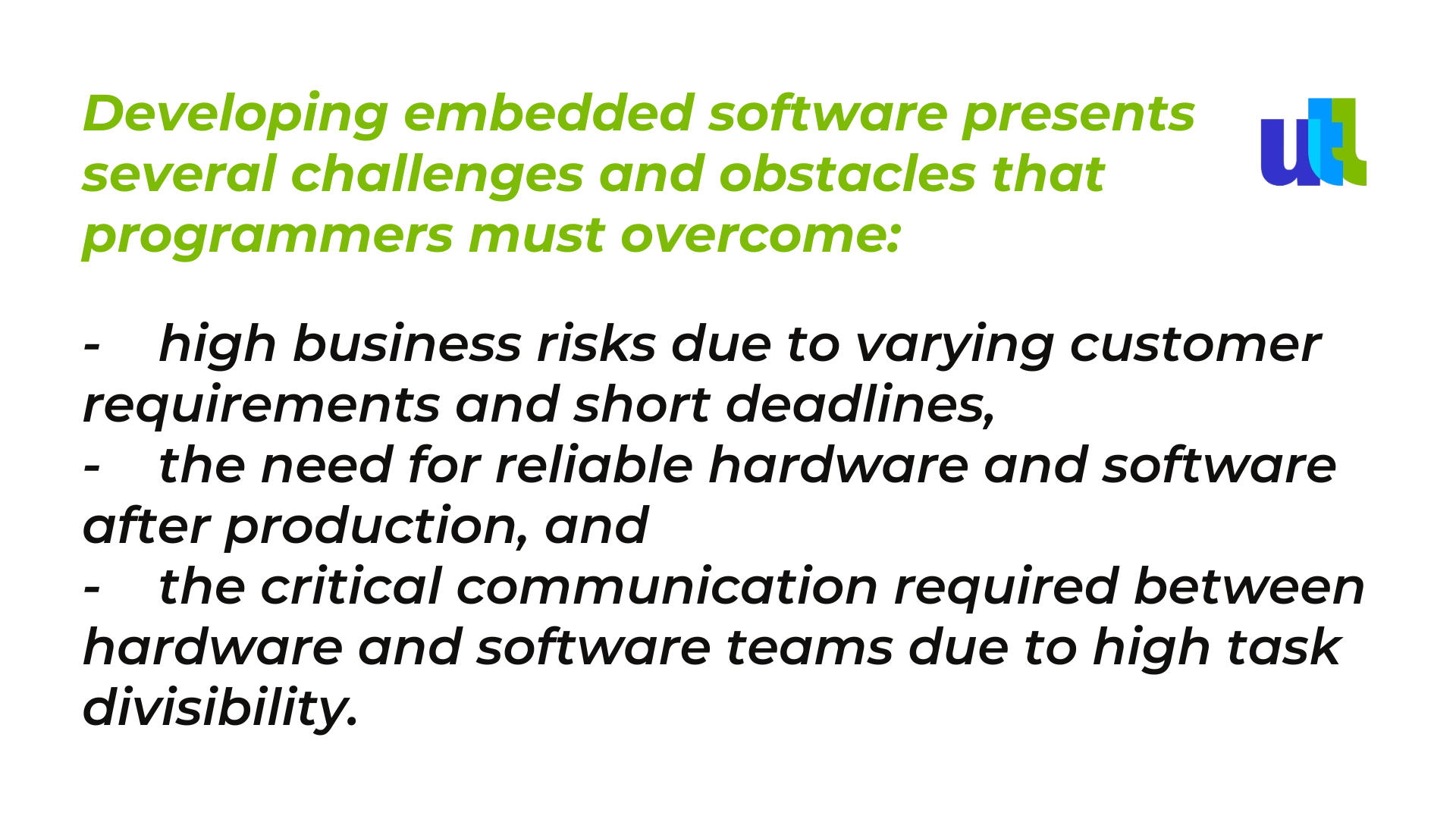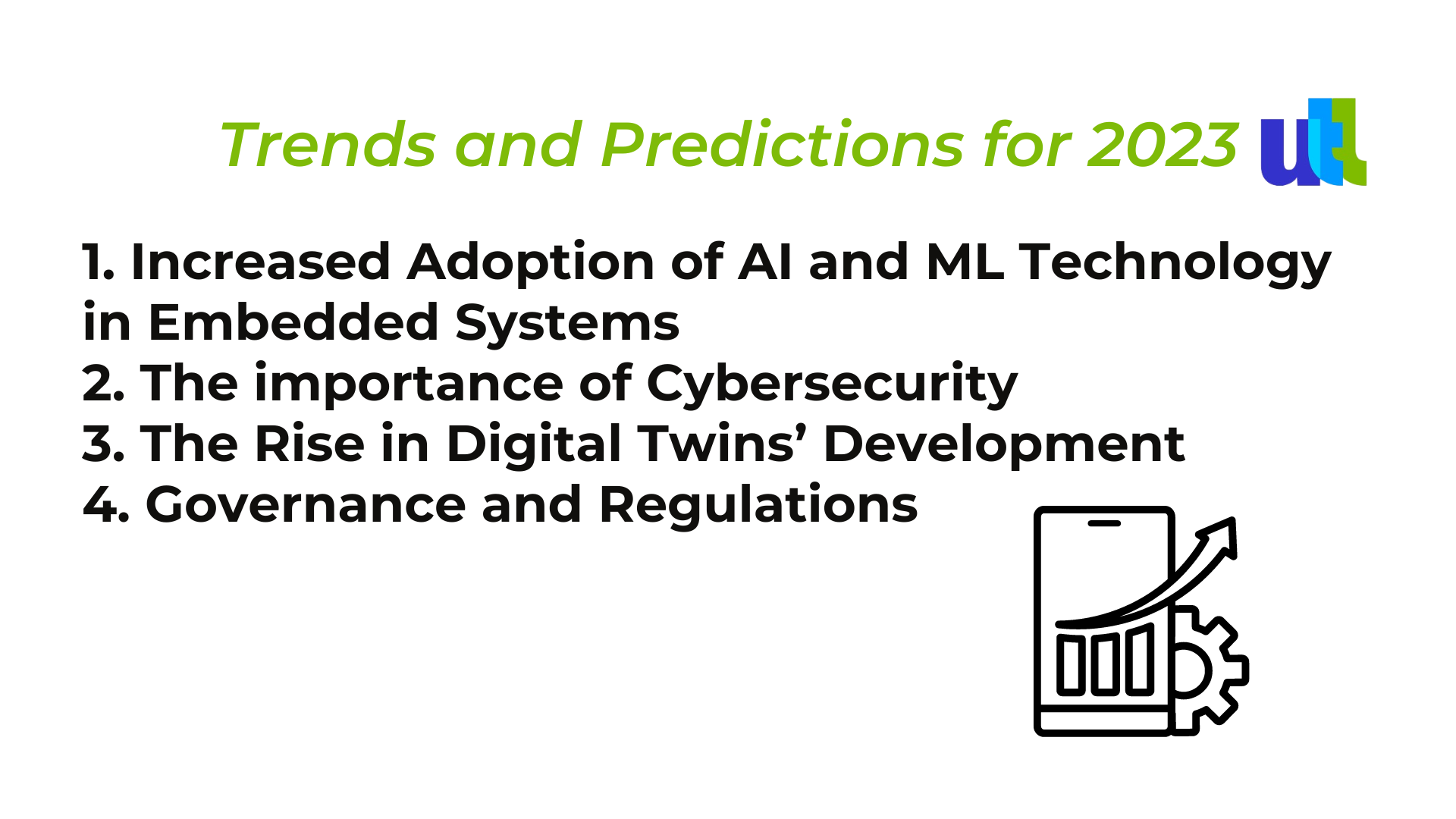While the majority of people can easily describe well-known operating systems like Windows and iOS, not everyone is familiar with embedded systems or how they function.
However, embedded systems exist all around us playing a crucial role in our daily lives and various industries.

The next time you use your electronic devices, remember the important role that embedded systems play in making them work.
What is an embedded system?
A software program that is permanently installed in a device to carry out pre-programmed tasks within a predetermined time frame is known as an embedded system. It is also referred to as micro, systemic, embedded, or device software. Such software typically runs unsupervised and doesn't need a graphical user interface or user interaction. Its main objective is to give the device basic functioning instructions. The embedded system is kept in the ROM of the gadget and can be updated using more modern hardware like Flash or EEPROM.
An embedded system can run on its own or in combination with other systems. As an example, a printer connected to a computer or network card has its own firmware that can only be triggered by external control. An internal microprocessor or microcontroller controls firmware, which can interface with other devices to calibrate, diagnose, or regain functionality.
In addition to everyday devices, embedded systems are used to control more complicated machines. The software's level of complexity is determined by the device it manages. However, all embedded systems share common features such as reliability and predictability. The embedded software should be more specialized to enable the division of duties into smaller subsystems as the complexity of the device increases. When two independent devices are assigned to the same duty to ensure the system functions properly even in the event of a failure, redundancy is utilized to boost reliability. Platforms of embedded systems have high mechanical resistance and can function in difficult environmental conditions.
The process of programming embedded systems
When creating embedded systems, hardware and specialized components must collaborate closely. This, however, is frequently difficult since engineers prioritize planning and following precise guidelines, whereas coders favor a more adaptable trial-and-error methodology. Before beginning the project, it is essential to clearly define the requirements and carefully choose the operating system, CPU, peripherals, and programming platform. Another crucial step is to establish new production milestones that are checked at every testing level. Many businesses choose the cascade approach, treating each activity as a distinct step in the finalization process. These actions could involve:
- System planning (included in the requirements specification);
- Design;
- Building the code;
- Testing;
- Production;
- Product support.
A structured approach offers better control over the execution of specific project components. Is it possible to apply this to programming as well? This is particularly true for the hardware side. The model relies on the idea that programmers can quickly modify the code to account for any modifications. In reality, any departure from the original requirements and design documentation would incur delays and extra expenditures. Hardware design and software development are equally vital and demand equal care.
Languages of embedded systems development
Programming languages for embedded systems development are essential for designing operating systems and low-level tasks. Despite being developed in the 1970s, C and C++ remain the most widely used languages in this industry. C is a low-level structural language that gives programmers precise control over a computer's processes, making it a suitable language for optimization on any platform. C++, on the other hand, is more general and objective than C.
Despite not being related to embedded software, Python is a popular beginning language for most IT courses due to its transparency and brevity. It's interesting to note that due to Python's modularity via the usage of C-written libraries, it can also be utilized in embedded devices with enough RAM to run Linux.
These programming languages have evolved over time to meet the specific needs of embedded system developers.
Challenges and problems in the development of embedded software

In particular, when employing a cascade model, these difficulties may result in the assumptions separating greatly from real development, making management more complex and having an impact on the end output. If not appropriately handled, these difficulties might cause issues throughout the design stage.
Agile development can help address many of these issues, but it is not a guarantee of success. Every project management technique has advantages and disadvantages, therefore it's important to have a coordinated team that follows a set process and schedules work in sprints with attainable objectives. Rushing might result in blunders and errors, which can hinder advancement.
Some businesses could find it difficult to switch to an agile model, thus they might use a hybrid strategy called "scrummerfall" to make the shift more manageable. However, inaction and disorganization can have negative consequences and hinder progress.
To sum up, creating embedded software presents major problems that must be carefully considered and successfully managed to be successful. Agile development is not a one-size-fits-all solution, and in order to produce the best outcomes, it must be executed with care and cooperation.
How to build embedded systems?
It's crucial to design a process for embedded system development that is similar to the systems being built. Each team member should have clearly defined roles and be an essential part of a larger, cohesive unit. In case of any issues, redundancy should be applied as a principle. Throughout the entire development cycle results of the work should be predictable and visible. This approach will ensure the creation of a reliable and efficient mechanism.
A wide range of products, machines, and AI processes now frequently use embedded hardware and software. Applications for them can be found in the automobile, healthcare, home appliances, and everyday gadget industries.
Embedded Software Market Stats From 2022
The embedded software market has surpassed $15 billion in 2022 and is expected to grow at a compound annual growth rate of 9% until 2032. This growth is influenced by various factors, such as the rapid advancements in artificial intelligence and machine learning technologies. Additionally, the post-pandemic years have led to a greater need for embedded systems and solutions, particularly in the automotive industry.
The ongoing semiconductor and chip crisis
Despite the ongoing growth of the embedded software development sector, the major obstacle to its expansion is the ongoing semiconductor and chip crisis. This issue is expected to result in a moderate annual growth rate for the industry. The crisis started in 2020 when the demand for chips and semiconductors exceeded their supply, affecting over 169 industries. The pandemic led to the disruption of supply chains, and the rapid shift to a stay-at-home economy only worsened the problem. Countries like South Korea and Taiwan struggled to produce the required quantities of chips and semiconductors, adversely affecting industries such as automotive and console gaming.
In addition to the pandemic, other factors have contributed to the crisis, such as the trade war between the USA and China, severe weather conditions, and the Russia-Ukraine war that began in 2022. The latter has affected the supply of gases such as neon, krypton, and xenon, which are required for chip manufacturing.
Despite these challenges, the embedded software development sector is expected to continue its growth and development.

The trends shown below started to appear and progress in 2022, and they'll probably become much more noticeable by 2023. The upcoming regulatory landscape change, which is anticipated to fundamentally alter current methods for developing embedded software, is especially significant.
1. Increased Adoption of AI and ML Technology in Embedded Systems
Numerous governmental organizations have put in place significant procedures to control the ethical, technological, and security elements of artificial intelligence (AI) systems as of 2022. The Artificial Intelligence Advancement Council, which will supervise AI development and organize initiatives on economic competitiveness and security, has been established by the US Department of Energy.
There will be a rise in development opportunities for embedded software developers globally as AI systems become more secure and regulated and with the arrival of 5G connections. Utilizing AI and machine learning, embedded systems can be trained to monitor and identify potential hardware failures as well as to deliver complicated data analytics for uses like predictive analytics and the production of digital twins.
2. The importance of Cybersecurity
Manufacturers of embedded hardware and software will give cybersecurity much more attention in 2023. Vendors of chips and microcontrollers will build in more security-related hardware features than ever before to shield embedded systems from outside threats.
The implementation of security measures by software developers will also include the use of memory-safe programming languages, secure C++ best practices, and Agile development methodologies that enable continuous testing and early bug detection.
IoT and embedded systems will need to adhere to stringent security standards in order to comply with new IoT rules.
3. The Rise in Digital Twins’ Development
We may anticipate a surge in the use of digital twin technologies by businesses by 2032, which will produce virtual versions of their assets, systems, processes, goods, and complete manufacturing plants. As connectivity between embedded devices grows, developers will be able to build real-time models of almost anything. These models can be used for predictive analytics, state monitoring, product testing, and other purposes.
In addition to embedded software development, creating digital twins will involve the utilization of cloud-based data platforms, cloud and edge computing, data governance and operations modules, enhanced visualizations, graphics, and other tools. Embedded software development will benefit from the broad use and dissemination of digital twin technologies.
4. Governance and Regulations
The European Union is expected to put regulations and standards into effect regarding data collecting, storage, and handling in 2023. These rules are anticipated to handle edge computing, a technique where data is processed locally rather than being routed to centralized servers, closer to the places of collection.
Similar laws, policies, and regulations are already being developed by other governments around the world. China, for example, anticipates finishing its three-year plan for implementing IoT regulatory laws in 2023.
To sum up…
Developing embedded software presents various challenges, with high business risks, the need for reliable hardware and software, and effective communication between hardware and software teams.
The use of agile development can help overcome these challenges, but it requires careful planning and coordination. To solve this issue, the development process for embedded systems should be similar to the systems being built, with clearly defined roles for team members and the application of redundancy as a principle.
The upcoming trends show us that the management and governance of IoT data will be subject to stronger international standards starting in 2023, therefore embedded software developers will need to concentrate more on data security and protection to guarantee their systems comply with the new rules. These rules may initially slow the industry's expansion, but they will also result in the creation of more standardized and secure embedded software systems.
For free consultation about embedded systems click here.
----------------------------------------------------------------------------------------------
View the full presentation:
WRITTEN BY
Sofia Kutko
2023-04-28










































































































































































